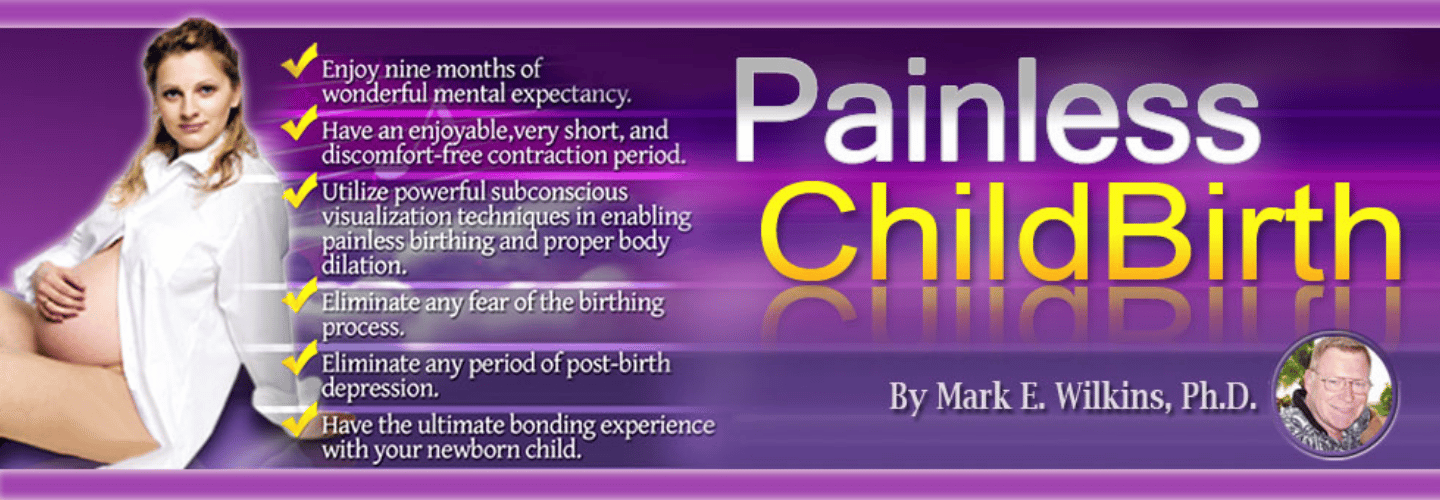
In the domain of labor and delivery, harnessing the power of hypnosis can be a transformative tool for mothers seeking a mindful and positive birthing experience. The utilization of hypnosis techniques offers a comprehensive approach to pain management and emotional well-being during childbirth. From deep breathing exercises to partner involvement, each strategy plays an essential role in fostering a serene and empowered atmosphere for expectant mothers. As we explore the seven best ways to employ hypnosis in labor, a world of possibilities awaits those who seek to embrace this natural and profound method of birthing support.
Hypnosis Techniques for Pain Relief
Hypnosis techniques for pain relief in labor harness the power of deep breathing, visualization, and positive affirmations to facilitate relaxation and enhance the birthing experience. HypnoBirthing techniques, often taught in childbirth classes, focus on self-hypnosis interventions to reduce anxiety and manage pain during labor. This non-pharmacological option offers women a holistic approach to coping with labor discomfort.
Visualization and Breathing Exercises
How can visualization and breathing exercises enhance the birthing experience for mothers utilizing hypnosis during labor?
Visualization techniques in hypnosis for labor involve creating mental images of a vital and positive birthing experience. By incorporating deep breathing exercises, mothers can relax, manage pain, and stay focused during labor.
Visualization can play an essential role in reducing stress hormones in the body, thereby promoting a calm and controlled birthing environment. When combined with controlled breathing, visualization enhances the mind-body connection, aiding in pain management and relaxation during labor.
Through practicing these techniques, mothers can feel empowered, confident, prepared, and in control during childbirth. The synergy between visualization and deep breathing not only contributes to a positive birthing experience but also fosters a sense of empowerment and calmness amidst the intensity of labor.
It is evident that utilizing these tools effectively can significantly enhance the overall birthing journey for mothers using hypnosis during labor.
Partner Involvement and Support

Partner involvement in labor can greatly impact the birthing experience. Partners can provide emotional support, actively participate in relaxation techniques, and create a calming environment for the laboring mother.
Their role in HypnoBirthing classes can strengthen their bond with the mother and enhance communication during the birthing process.
Active Participation in Labor
Active participation from a supportive individual during labor can greatly enhance the overall birthing experience for the mother. Partners play an important role by providing physical support, encouragement, and reassurance. Their involvement helps create a calm environment ideal for utilizing relaxation techniques and hypnosis management.
Practicing techniques like HypnoBirthing together before labor can further strengthen their supportive role. Effective communication between partners is essential for ensuring a harmonious experience. Partner support not only aids in managing labor pain but also contributes greatly to promoting a positive birth experience.
Emotional Support Techniques
Enhancing the birthing experience through emotional support techniques involves fostering a nurturing environment for the laboring mother. Partner involvement is essential in providing emotional support during labor, aiding in reducing pain perception and promoting relaxation through techniques such as guided imagery, affirmations, and relaxation prompts.
Partners play a vital role in creating a supportive environment that enhances the effectiveness of hypnosis in labor. This support not only strengthens the bond between partners but also empowers them to navigate the birthing process together, making it an empowering and positive experience for both.
Partner involvement in hypnosis during labor can truly transform the birthing journey into a more harmonious and supportive one.
Cognitive-Behavioral Hypnotherapy
Cognitive-Behavioral Hypnotherapy in labor offers a targeted approach to address fear triggers. By blending cognitive restructuring with hypnotic techniques, it aims to manage pain and enhance coping mechanisms.
This method is supported by research for reducing anxiety and promoting a positive birthing experience.
Benefits of Hypnotherapy
Utilizing hypnotherapy during labor can greatly aid in addressing fear triggers that contribute to heightened pain perception. Cognitive-Behavioral Hypnotherapy, a powerful approach, offers various benefits that can positively impact the birthing experience:
- Reduction of Anxiety: By combining cognitive-behavioral techniques with hypnosis, individuals can achieve deep relaxation, lowering anxiety levels during childbirth.
- Decreased Need for Anesthesia and Pain Medication: Studies have shown that Cognitive-Behavioral Hypnotherapy can notably reduce the requirement for anesthesia and pain medication, promoting a more natural birthing process.
- Empowerment Through Mindset Shift: This method focuses on changing negative thought patterns, empowering individuals to retrain their response to discomfort and manage labor pain more effectively, leading to a more positive and empowering birth experience.
Techniques for Hypnosis
In the practice of hypnosis for labor, incorporating specific relaxation techniques plays a crucial role in optimizing pain management and promoting a positive birthing experience. Cognitive-Behavioral Hypnotherapy targets fear triggers during labor, aiming to induce relaxation and enhance pain management.
By combining cognitive restructuring with hypnosis techniques, individuals can cultivate coping skills for childbirth. Utilizing tools such as controlled breathing and visualization aids in managing pain and reducing anxiety. Cognitive strategies are employed to reframe negative thoughts, empowering individuals to feel more in control during labor.
Through Cognitive-Behavioral Hypnotherapy, perceptions of pain can be transformed, leading to more positive birth experiences for mothers.
Creating a Calm Birth Environment

To create a serene birthing environment, it is essential to focus on elements such as dim lighting, soothing music, and familiar scents that promote relaxation and comfort for the laboring individual. Implementing the following strategies can help cultivate a calming atmosphere during labor:
- Comfortable Birthing Positions: Encouraging the use of comfortable and natural birthing positions can enhance relaxation and reduce discomfort for the laboring person.
- Slow, Deep Breathing: Guiding the individual to practice slow, deep breathing techniques can promote a sense of calmness and help manage pain effectively during contractions.
- Minimizing Interruptions: Maintaining a peaceful ambiance by minimizing noise and distractions in the birthing environment can aid in keeping the laboring person focused and in control.
HypnoBirthing Classes and Education
Enrolling in HypnoBirthing classes provides expectant parents with specialized education and practical techniques tailored to enhance relaxation, visualization, and self-hypnosis skills for a more empowered childbirth experience. These structured classes cater to pregnant nulliparous women, offering thorough childbirth education that explores pain management during labor through the development of self-hypnosis skills. By focusing on the mind-body connection, HypnoBirthing aims to reduce pain and decrease the need for medication use during childbirth.
HypnoBirthing classes teach a variety of relaxation techniques, deep breathing exercises, and visualization methods specifically designed for labor and delivery. Participants learn about pregnancy nutrition, stages of labor, and how to utilize self-hypnosis for pain management effectively. Weekly practice sessions help individuals hone their self-hypnosis skills, preparing them for a more controlled and comfortable birthing experience. Through HypnoBirthing education, expectant parents can gain confidence in their ability to navigate labor with reduced anxiety and increased relaxation, ultimately promoting a positive and empowering childbirth journey.
Postpartum Hypnosis Benefits

Postpartum hypnosis offers numerous benefits for new mothers, including reducing stress, anxiety, and symptoms of postnatal depression. Through hypnosis techniques, mothers can experience the following benefits:
- Relaxation Promotion: Postpartum hypnosis aids in promoting relaxation, allowing mothers to unwind and de-stress during the demanding postnatal phase.
- Sleep Quality Improvement: By incorporating hypnosis practices, new mothers can enhance their sleep quality, which is often disrupted due to the challenges of caring for a newborn.
- Coping with Motherhood: Postpartum hypnosis assists mothers in adjusting to their new role, coping with the demands of motherhood, and finding inner strength and resilience to navigate this transformative period effectively.
Moreover, utilizing postpartum hypnosis can also help in easing physical discomfort, fostering the bonding process between the mother and baby, and enhancing overall well-being.
Frequently Asked Questions
How to Do Hypnosis for Labor?
To perform hypnosis for labor, one must first master deep relaxation, positive affirmations, visualization techniques, breathing exercises, and cultivate a strong mind-body connection.
Utilizing guided imagery and hypnotic induction can aid in pain management.
Labor support, including partner prompts and comfort measures, can enhance the process.
Empowering oneself with an optimistic mindset is essential for an effective hypnosis experience during labor.
What Are Hypnobirth Strategies?
Hypnobirth strategies encompass a range of techniques aimed at promoting a positive birthing experience. These include breathing techniques, visualization exercises, and positive affirmations to foster relaxation and pain management.
By emphasizing the mind-body connection, hypnobirth encourages self-care practices, partner involvement, and creating a calm environment during labor.
Hypnosis scripts are utilized to train the brain to interpret sensations as pressure rather than pain, enhancing coping mechanisms and empowering women during childbirth.
Which Childbirth Method Involves a Form of Self-Hypnosis?
A childbirth method that involves self-hypnosis techniques is HypnoBirthing. It incorporates relaxation exercises, breathing techniques, visualization methods, and positive affirmations to strengthen the mind-body connection.
Can Hypnosis Reduce Pain in Childbirth?
Hypnosis can effectively reduce pain perception during childbirth by promoting relaxation, enhancing the mind-body connection, and altering pain sensations. Through techniques like breathing exercises, visualization methods, and positive affirmations, hypnosis provides coping mechanisms to empower women with an empowering mindset.
Conclusion
To sum up, the utilization of hypnosis techniques during labor offers a non-pharmacological option for pain relief and promotes a positive birthing experience.
From visualization and breathing exercises to partner involvement and creating a calm birth environment, hypnosis can empower women to feel more in control and reduce anxiety.
By incorporating hypnosis into prenatal and postpartum care, expectant mothers can enhance their birthing journey and improve their overall well-being.
Explore the transformative power of hypnosis for a truly empowering birth experience.





